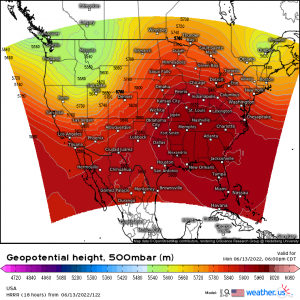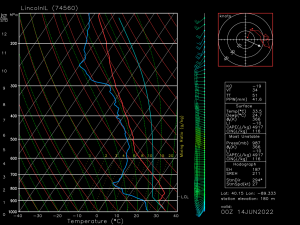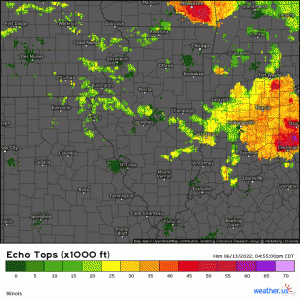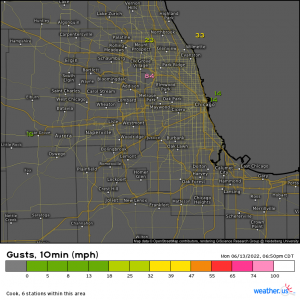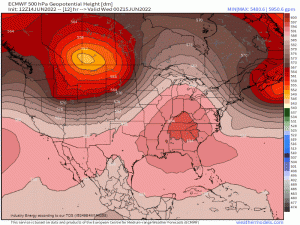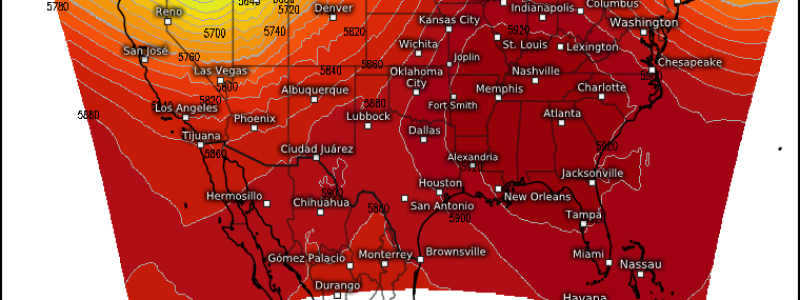
The Ring of Fire: Not Just a Song
Have you heard of the Ring of Fire?
I’m not talking about the Johnny Cash song. I’m not even talking about the active faults and volcanoes outlining the Pacific Ocean.
No, what I am talking about a is pattern that typically sets up in the summertime. A strong ridge builds in. Those under the ridge roast while impulses move around the fringes of the ridge. The resulting storms can sometimes be severe or even long-lived, if the conditions are right.
This is the pattern that produced yesterday’s storms. Though atmospheric conditions and timing didn’t combine correctly for long-lived, powerful complexes, enough ingredients were there for a few very powerful storms.
Take a look at this observed sounding from Lincoln, IL – just south of Chicago where one of the more explosive storms occurred.
We have:
- Dry air aloft which, as regular readers know, is important for the development of downdrafts.
- Incredible instability. This sounding indicates nearly 5000 J/kg of energy available.
- A cap aloft. This cap let the instability build below it. Daytime heating leading to some serious heat fueled a build-up of quite a bit of instability. When it finally eroded, the developing storm exploded.
Speaking of instability and available energy, check out this loop of cloud top heights as the storm over Chicago formed and strengthened.
Once the cap broke, you can see how quickly cloud tops shot up to 60,000 – 65,000 ft, fueled by ~5000+ J/kg of pent up energy.
The height of the clouds allowed the storms to tap into faster winds aloft and ultimately pull them down (slightly modified) to the surface.
A gust of 84 mph was recorded at O’Hare as the storm unloaded over Chicago.
So, as long as there is ridging resulting in anomalous summer heat and impulses rotating around that ridge, the threat for severe weather will remain.
From the Plains/Midwest today, into the Midwest/Great Lakes tomorrow, and the Northeast on Thursday, the potential exists for severe weather.
Tomorrow’s event has the potential to be slightly more potent than the others as an upper low rotates around the ridge. Tornadoes, strong winds, and hail are all possibilities.
